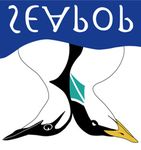Short Report 3-2009 - Migration patterns, breeding and moulting locations of king eiders wintering on the coast of Norway as determined from ...
←
→
Page content transcription
If your browser does not render page correctly, please read the page content below
Short Report 3-2009
Migration patterns, breeding‐ and moulting
locations of king eiders wintering on the coast of
Norway as determined from satellite telemetry
Jan Ove Bustnes & Geir Helge Systad
© SEAPOP 2009SEAPOP Short Report 3‐2009
Migration patterns, breeding‐ and moulting locations of king
eiders wintering on the coast of Norway as determined from
satellite telemetry
Many sea duck species have declined in recent years, and there is currently concern about several
populations. There have been particular focus on eiders, and recently breeding populations of both
king eiders Somateria spectabilis and common eiders S. mollissima have been declining. The king
eider is a somewhat nomadic species, and its major wintering area in Europe is the coast of northern
Norway. There are, however, no reliable estimates for the size of the wintering population; it might
however consist of more than 100,000 birds. Systad & Bustnes (1999) counted 30,000 wintering birds
on the Finnmark Coast alone in the late 1990s. The origin of Norwegian wintering population has
been unknown, as there are no recoveries of banded birds. It was therefore pertinent to study
migration and origin of this large population within the framework of SEAPOP. Many recent studies
have demonstrated that the most efficient method of acquiring movement data on sea ducks is by
using implanted satellite transmitters, and in this study we deployed 10 transmitters in king eiders.
The project is carried out in cooperation with Anders Mosbech and Christian Sonne at the National
Environmental Research Institute in Denmark (Danmarks Miljøundersøkelser).
Methods
The area of deployment was Båtsfjord in eastern Finnmark. In the last week of February 2008 king
eiders were caught using sinking nets in the Båtsfjord harbour area. Five males and five females were
selected for implanting of transmitters by surgical procedures (Figure 1). After a short period of
recovery (about 2 hrs) the birds were released. The signals from the transmitters were received by
ARGOS satellites.
Figure 1
Male king eider fitted with an
implanted satellite transmitter.
The antenna is clearly visible.
(© J.O. Bustnes)
2SEAPOP Short Report 3‐2009
Figure 2
Spring migration routes of king eider
fitted with implanted satellite
transmitters.
Results
Unfortunately, four of the transmitters failed while the birds were still in Båtsfjord. This was an
unexpectedly high failure rate. The six remaining birds departed in early April and flew over open
sea, staging in sea ice in the Pechora Sea and Kara Sea (Figure 2).
One more transmitter failed in the Pechora Sea, leaving five functioning transmitters. The birds
stayed in the ice until the breeding season in mid/late June when they started to move inland. Three
out of the five birds moved inland, probably to breed, including one in the midst of ‐, and two in the
outskirts of the Taymyr Peninsula. Two birds appeared not to move inland during the breeding
season (Figure 3).
The birds left the eastern breeding areas in July/August and four birds moved to the Pechora Sea to
moult, while one bird chose a different route; through the eastern and northern coasts of Taymyr to
the Novaya Zemlya (Figure 4).
One bird returned to Båtsfjord about first of December (the one moulting at Novaya Zemlya), while
one bird moved from the Pechora Sea to Båtfjord in late December (Figure 5). The other three
transmitters failed in mid/late December while the birds were still in the Pechora Sea.
3SEAPOP Short Report 3‐2009
Figure 3
Migration from staging to breeding
areas of king eider fitted with
implanted satellite transmitters.
Figure 4
Migration from breeding areas to
moulting areas by king eiders fitted
with satellite transmitters.
4SEAPOP Short Report 3‐2009
Figure 5
Migration from moulting areas to
staging and winter areas by king
eiders fitted with satellite
transmitters.
Conclusion
This study demonstrates that the king eiders wintering in north‐eastern Norway originate from the
western half of Arctic Russia, in the area between the Yamal and eastern Taymyr Peninsulas. It thus
seems that the Taymyr Peninsula is the dividing point between eastern and western flyways, as
previously demonstrated for Steller’s eiders. It also demonstrates the importance of the Pechora Sea
as a staging and moulting location for this population, which corresponds with recent discoveries of
huge populations of blue mussels in the area.
References
Systad, G.H. & Bustnes, J.O. 1999. Kartlegging av kystnære sjøfugler på Finnmarkskysten utenom hekketida:
kartlegging ved hjelp av flytellinger. NINA oppdragsmelding 605, 66 pp.
Cover photo: Male king eider. (© J.O. Bustnes)
5SEAPOP Short Report 3‐2009
Author contact information
J.O. Bustnes, jan.o.bustnes@nina.no and G.H. Systad, geir.h.systad@nina.no
Norwegian Institute for Nature Research (NINA), Polar Environmental Centre, NO‐9296 Tromsø
Publication series information
SEAPOP Short Report (SSR) is published by the Norwegian Institute for Nature Research (NINA), the Norwegian
Polar Institute (NP) and Tromsø University Museum (TMU) as a web‐based newsletter presenting individual
progress reports and analyses of projects within the SEAPOP programme. The individual SSRs have no
ISNN/ISBN coding, but the reports for each year will be collated and published in the registered report series
NINA Report as a SEAPOP annual report.
SEAPOP (SEAbird POPulations) is a long‐term monitoring and mapping programme for Norwegian seabirds that
was established in 2005 and implemented on the full national scale in Norway, Svalbard and adjacent sea areas
in 2008. The programme is financed by the Ministry of the Environment, the Ministry of Petroleum and Energy
and the Norwegian Oil Industry Association, and aims to provide and maintain the most important base‐line
knowledge of seabird distribution, demography and ecology needed for an improved management of these
marine environments. More info about SEAPOP is found on the programme’s web site www.seapop.no,
including an up‐to‐date list of associated publications from which all reports can be freely downloaded as pdf
documents.
Series editors
Tycho Anker‐Nilssen, tycho@nina.no
Robert T. Barrett, rob.barrett@uit.noYou can also read
























































